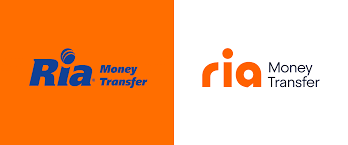Navigating the aftermath of a disaster—be it a fire, flood, or storm—can be overwhelming. Beyond the immediate damage and emotional toll, managing an insurance claim can add another layer of stress and complexity. This is where an insurance public adjuster steps in as a crucial ally. Unlike insurance company adjusters, who work on behalf of the insurer, public adjusters represent you, the policyholder, ensuring you receive the compensation you deserve.
What is an Insurance Public Adjuster?
An insurance public adjuster is a licensed professional who assists policyholders in preparing, filing, and negotiating insurance claims. Their role is to evaluate the damage, interpret the policy, and ensure that the insurance company pays the full amount due under the terms of the policy.
Why You Need a Public Adjuster
-
Expert Knowledge and Experience: Public adjusters bring extensive knowledge of insurance policies, claims processes, and the construction and repair industry. This expertise is invaluable in interpreting the often complex language of insurance policies and understanding the full scope of the damage.
-
Maximizing Your Settlement: Studies show that policyholders using public adjusters often receive significantly higher settlements than those who do not. A public adjuster advocates on your behalf, ensuring that all damage is thoroughly documented and that the claim includes all covered losses.
-
Time and Stress Management: Handling an insurance claim can be time-consuming and stressful, especially when dealing with the aftermath of a disaster. A public adjuster manages the entire process, from initial assessment to final settlement, allowing you to focus on recovery.
-
Leveling the Playing Field: Insurance companies have their own adjusters who aim to minimize payouts. A public adjuster levels the playing field by advocating for your interests and ensuring a fair and just settlement.
The Process: How a Public Adjuster Works
-
Initial Assessment: The public adjuster conducts a thorough inspection of the property to assess the damage. This includes documenting visible and hidden damages, which can often be overlooked by the policyholder or the insurance company’s adjuster.
-
Policy Review and Interpretation: They review your insurance policy to understand coverage, exclusions, and the maximum claim amount. This step is crucial in ensuring that no eligible coverage is overlooked.
-
Claim Preparation: The adjuster prepares a detailed claim package, including repair estimates, photographs, and other documentation. This package forms the basis of the negotiation with the insurance company.
-
Negotiation: The public adjuster negotiates with the insurance company on your behalf. Their goal is to secure the maximum settlement allowed under the policy terms.
-
Settlement and Follow-up: Once a settlement is reached, the public adjuster ensures that all payments are made promptly and accurately. They also provide follow-up services if any additional issues arise.
Facts and Figures: Public Adjusters and Insurance Claims
To understand the impact and effectiveness of public adjusters, consider these compelling statistics:
| Aspect | Statistic/Figure |
|---|---|
| Average Increase in Settlement | 747% higher for claims with public adjuster involvement (OPAGGA, 2010) |
| Public Adjuster Fee Range | Typically 10-20% of the claim settlement |
| Time Saved in Claims Process | Significant reduction in processing time compared to self-managed claims |
| Satisfaction Rate | Policyholders report higher satisfaction with claim outcomes |
| States Requiring Public Adjuster Licensing | All 50 states (plus D.C.) require licensing for public adjusters |
Real-World Examples
Example 1: Residential Fire Damage
A family home suffers extensive damage from a fire. The homeowner’s insurance company offers a settlement of $150,000. Feeling that this amount is insufficient, the homeowner hires a public adjuster. After a thorough assessment and negotiation, the public adjuster secures a settlement of $375,000, more than doubling the initial offer.
Example 2: Commercial Water Damage
A small business experiences significant water damage due to a burst pipe. The insurance company proposes a payout of $50,000. The business owner engages a public adjuster who identifies additional damages and lost revenue. The final settlement is $125,000, covering all repair costs and compensating for business interruption.
Choosing the Right Public Adjuster
Selecting the right public adjuster is critical to ensuring a successful claim process. Here are some factors to consider:
-
Licensing and Credentials: Ensure the adjuster is licensed in your state and has the necessary credentials. Membership in professional organizations, such as the National Association of Public Insurance Adjusters (NAPIA), can indicate a commitment to ethical standards and ongoing education.
-
Experience and Specialization: Look for an adjuster with experience handling claims similar to yours. Whether it’s residential, commercial, or specific types of damage, their expertise can make a significant difference in the outcome.
-
Reputation and References: Research the adjuster’s reputation by reading reviews and asking for references. Speaking with past clients can provide insights into their reliability and effectiveness.
-
Fee Structure: Understand the adjuster’s fee structure and ensure it aligns with your financial situation. Public adjusters typically charge a percentage of the final settlement, so it’s important to clarify these terms upfront.
Conclusion
Navigating the complexities of an insurance claim can be daunting, especially in the wake of a disaster. An insurance public adjuster serves as your advocate, bringing expertise, experience, and a dedication to securing the maximum settlement you deserve. Whether you’re dealing with fire, water, storm damage, or any other insured loss, partnering with a public adjuster can provide the support and confidence needed to achieve a fair and just outcome.
By understanding their role and the value they bring, you can make informed decisions and ensure that your insurance claim process is handled with the utmost professionalism and care. When disaster strikes, having a knowledgeable public adjuster on your side can make all the difference in recovering and rebuilding.





